
Mathijs Boom
@mathijsboom.bsky.social
Historian of science and environment | finishing a book on watery Earth histories 1600-1800 and starting one on anti-nuclear movements and planetary futures in the 1970s-80s | Postdoc @iisg-amsterdam.bsky.social | PhD from @uva.nl
Sunrise like this improves even the most agro-industrial farmland.

November 5, 2025 at 7:05 AM
Sunrise like this improves even the most agro-industrial farmland.
There are many versions of this nuclear fuel cycle diagram, but I like this hand-drawn one with a little A-bombs being jettisoned by various nodes in the process.

October 8, 2025 at 9:38 AM
There are many versions of this nuclear fuel cycle diagram, but I like this hand-drawn one with a little A-bombs being jettisoned by various nodes in the process.
Cool posters for what turned out to be the largest ever demonstration against nuclear facilities in the Netherlands, in March 1978. The one about Brazil's military dictatorship is creepy though, with its 'third world' imagery.




October 8, 2025 at 9:28 AM
Cool posters for what turned out to be the largest ever demonstration against nuclear facilities in the Netherlands, in March 1978. The one about Brazil's military dictatorship is creepy though, with its 'third world' imagery.
Ubiquitous assumptions about ‘peak oil’ and shifts in energy use, in a ‘82 DHV report about Dutch energy policy and developing countries.

October 7, 2025 at 10:06 AM
Ubiquitous assumptions about ‘peak oil’ and shifts in energy use, in a ‘82 DHV report about Dutch energy policy and developing countries.
Back to 80s energy scenarios at the Nationaal Archief where letters offer a good reminder of serious ’computing costs’. Modeling futures demanded time, energy and digital infrastructure.

October 7, 2025 at 9:42 AM
Back to 80s energy scenarios at the Nationaal Archief where letters offer a good reminder of serious ’computing costs’. Modeling futures demanded time, energy and digital infrastructure.
250.000 marching in Amsterdam, in solidarity with Gaza, and to ask our government to finally draw a f-ing line.

October 5, 2025 at 5:50 PM
250.000 marching in Amsterdam, in solidarity with Gaza, and to ask our government to finally draw a f-ing line.
Gotta love the poster collection at @iisg-amsterdam.bsky.social

September 25, 2025 at 3:02 PM
Gotta love the poster collection at @iisg-amsterdam.bsky.social
1974 thoughts on the 'distant future' (2015) from a Dutch committee for energy research: modeling pol and soc-econ change is silly, but modeling demand for energy and raw materials is less so.

September 25, 2025 at 9:03 AM
1974 thoughts on the 'distant future' (2015) from a Dutch committee for energy research: modeling pol and soc-econ change is silly, but modeling demand for energy and raw materials is less so.
Stunning indeed. Reminded Jason Grek-Martin and Bruce Braun's research ("vertical territory") on the geological survey of Haida Gwaii in 1878 by George Dawson. Dawson took ethnographic notes and simultaneously disappeared the Haida in his geological maps—irrelevant to future extractive purposes.




September 25, 2025 at 7:42 AM
Stunning indeed. Reminded Jason Grek-Martin and Bruce Braun's research ("vertical territory") on the geological survey of Haida Gwaii in 1878 by George Dawson. Dawson took ethnographic notes and simultaneously disappeared the Haida in his geological maps—irrelevant to future extractive purposes.
Gov't scenarios were contrasted with Shell's: the first aimed at thinking through the interplay between exogenous developments and policy, while the second tried to imagine different futures in which Shell would have to operate (see also @jennande.bsky.social's doi.org/10.1017/S000...)

September 24, 2025 at 12:43 PM
Gov't scenarios were contrasted with Shell's: the first aimed at thinking through the interplay between exogenous developments and policy, while the second tried to imagine different futures in which Shell would have to operate (see also @jennande.bsky.social's doi.org/10.1017/S000...)
Fascinating gov't archives on Dutch energy scenarios of the late 70s and early 80s: in the wake of the Arab oil boycot and intense public debate about nuclear energy different policy scenarios for 2000 and 2025 were developed, including a zero-growth one.


September 24, 2025 at 12:39 PM
Fascinating gov't archives on Dutch energy scenarios of the late 70s and early 80s: in the wake of the Arab oil boycot and intense public debate about nuclear energy different policy scenarios for 2000 and 2025 were developed, including a zero-growth one.
Ironic: EU court rules that investments in gas and nuclear may retain 'sustainable' status in the EU taxonomy for a transition away from coal. In the 70s, there was much talk in Europe of nuclear and coal (gasification) as transition fuels on the way to renewables as gas reserves seemed to run out.


September 10, 2025 at 2:38 PM
Ironic: EU court rules that investments in gas and nuclear may retain 'sustainable' status in the EU taxonomy for a transition away from coal. In the 70s, there was much talk in Europe of nuclear and coal (gasification) as transition fuels on the way to renewables as gas reserves seemed to run out.
For those of you in Amsterdam: on October 10th, 12-13h, I'll present new research done at @iisg-amsterdam.bsky.social about "plundered uranium" and how nuclear fuel made it into the Dutch nuclear energy debate of the 70s and 80s, at the @uvahumanities.bsky.social's Environment & Society seminar.


September 5, 2025 at 8:13 AM
For those of you in Amsterdam: on October 10th, 12-13h, I'll present new research done at @iisg-amsterdam.bsky.social about "plundered uranium" and how nuclear fuel made it into the Dutch nuclear energy debate of the 70s and 80s, at the @uvahumanities.bsky.social's Environment & Society seminar.
Such an old story by now. In '77, director of Dutch Urenco-branch UCN and later Shell exec Hein Hooykaas wrote that curbing energy supply worldwide was "illusory and inhumane" as it would restrict development in the Third World.


September 4, 2025 at 7:04 AM
Such an old story by now. In '77, director of Dutch Urenco-branch UCN and later Shell exec Hein Hooykaas wrote that curbing energy supply worldwide was "illusory and inhumane" as it would restrict development in the Third World.
Reading about Amory Lovins and other "soft energy path"-proponents of the 70s, I'm surprised to find frequent references to "clean coal" technologies as a transition fuel alternative to nuclear energy—until a steady state energy economy would be reached.



September 2, 2025 at 7:58 AM
Reading about Amory Lovins and other "soft energy path"-proponents of the 70s, I'm surprised to find frequent references to "clean coal" technologies as a transition fuel alternative to nuclear energy—until a steady state energy economy would be reached.
Keeping a draughty Dutch home warm by burning turf, while peatlands throughout the Republic were transformed. In your backyard mining indeed. A 1711 engraving by Jan Luyken. (Rijksmuseum, Amsterdam)

May 1, 2025 at 2:42 PM
Keeping a draughty Dutch home warm by burning turf, while peatlands throughout the Republic were transformed. In your backyard mining indeed. A 1711 engraving by Jan Luyken. (Rijksmuseum, Amsterdam)
In the 17th-century, peat (or turf really) was so commonplace that tiny pieces were used for a collection of dollhouse attributes. Fascinating pieces of fossil fuel history. (Rijksmuseum, Amsterdam)
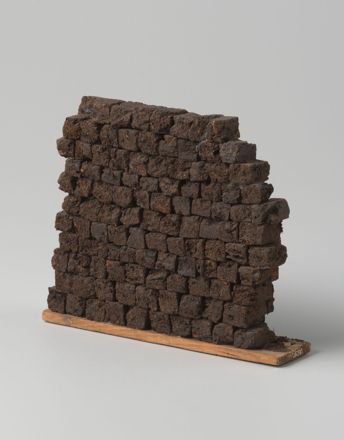
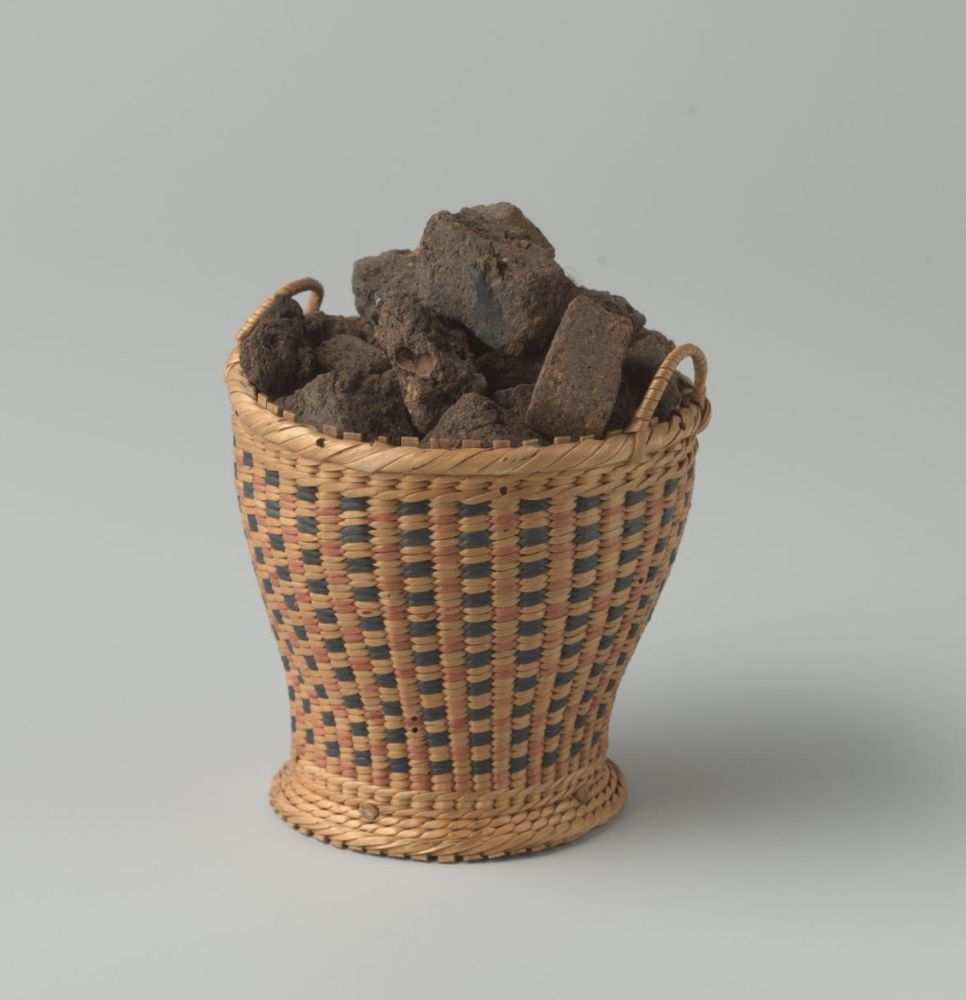
May 1, 2025 at 2:19 PM
In the 17th-century, peat (or turf really) was so commonplace that tiny pieces were used for a collection of dollhouse attributes. Fascinating pieces of fossil fuel history. (Rijksmuseum, Amsterdam)
Another flood: from Leonardo da Vinci's 'deluges'. In early 16th-century Italy, deluges were often understood as recurring events, rejuvenating parts of the Earth and disappearing entire civilizations without a trace. Only later did Noah flood come to dominate Earth histories. (Royal Collection, UK)

April 30, 2025 at 11:07 AM
Another flood: from Leonardo da Vinci's 'deluges'. In early 16th-century Italy, deluges were often understood as recurring events, rejuvenating parts of the Earth and disappearing entire civilizations without a trace. Only later did Noah flood come to dominate Earth histories. (Royal Collection, UK)
A 1525 watercolor by Albrecht Dürer depicts a nightmare of a great deluge, raining down in great pillars of water. Underneath, he wrote: "When I awoke my whole body trembled and I could not recover for a long time." (Kunsthistorisches Museum, Vienna)
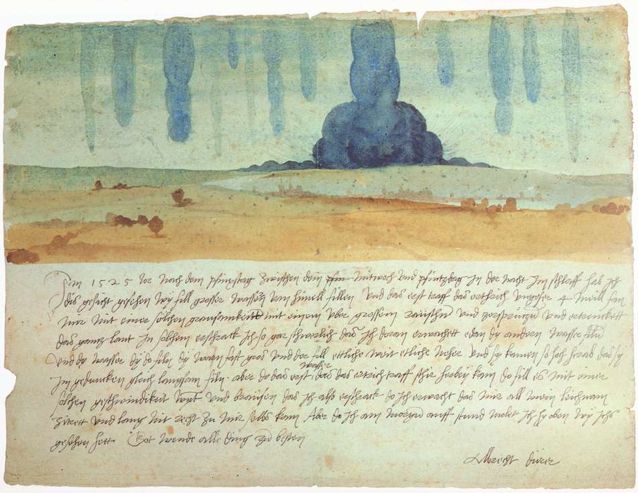
April 30, 2025 at 10:56 AM
A 1525 watercolor by Albrecht Dürer depicts a nightmare of a great deluge, raining down in great pillars of water. Underneath, he wrote: "When I awoke my whole body trembled and I could not recover for a long time." (Kunsthistorisches Museum, Vienna)
Mooie verzameling kaarten! Beetje een zijpad, maar deze fraaie kaart van Bernardus Schotanus à Sterringa uit de late 17de-eeuw is ook erg interessant als historische verbeelding van hoe hij dacht dat het gebied er in de Romeinse tijd—voor de afgravingen en overstromingen—bij had gelegen.
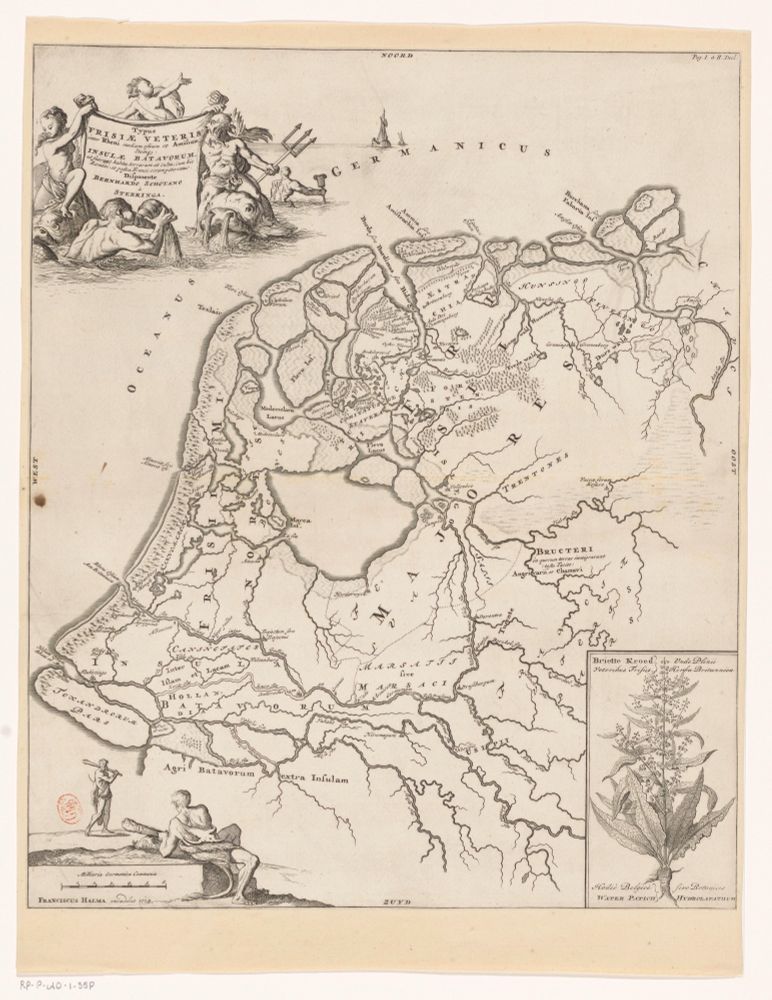
April 24, 2025 at 3:51 PM
Mooie verzameling kaarten! Beetje een zijpad, maar deze fraaie kaart van Bernardus Schotanus à Sterringa uit de late 17de-eeuw is ook erg interessant als historische verbeelding van hoe hij dacht dat het gebied er in de Romeinse tijd—voor de afgravingen en overstromingen—bij had gelegen.
Eén cruciale afbeelding is helaas niet in de druk-versie terechtgekomen: de weergave van de putboring als tabel, waarschijnlijk ook uit de vroege 17de eeuw. Hierbij!

March 31, 2025 at 11:58 AM
Eén cruciale afbeelding is helaas niet in de druk-versie terechtgekomen: de weergave van de putboring als tabel, waarschijnlijk ook uit de vroege 17de eeuw. Hierbij!
Ik schreef een stukje over één van de leukste bronnen uit mijn proefschrift en waarom het Nederlandse laagland een plek in de geschiedenis van geologie verdient. Het verschijnt in Geo.brief, het blad van het Koninklijk Nederlands Geologisch en Mijnbouwkundige Genootschap, maar is gratis te lezen.
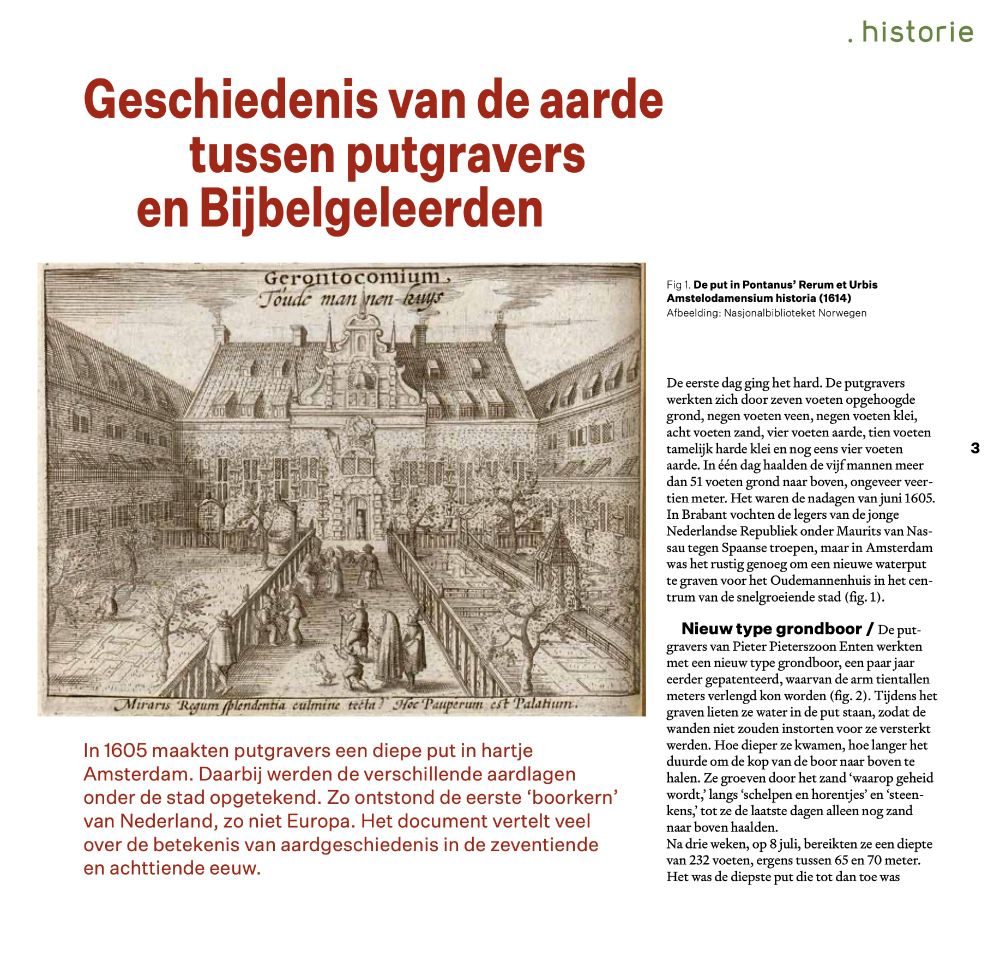

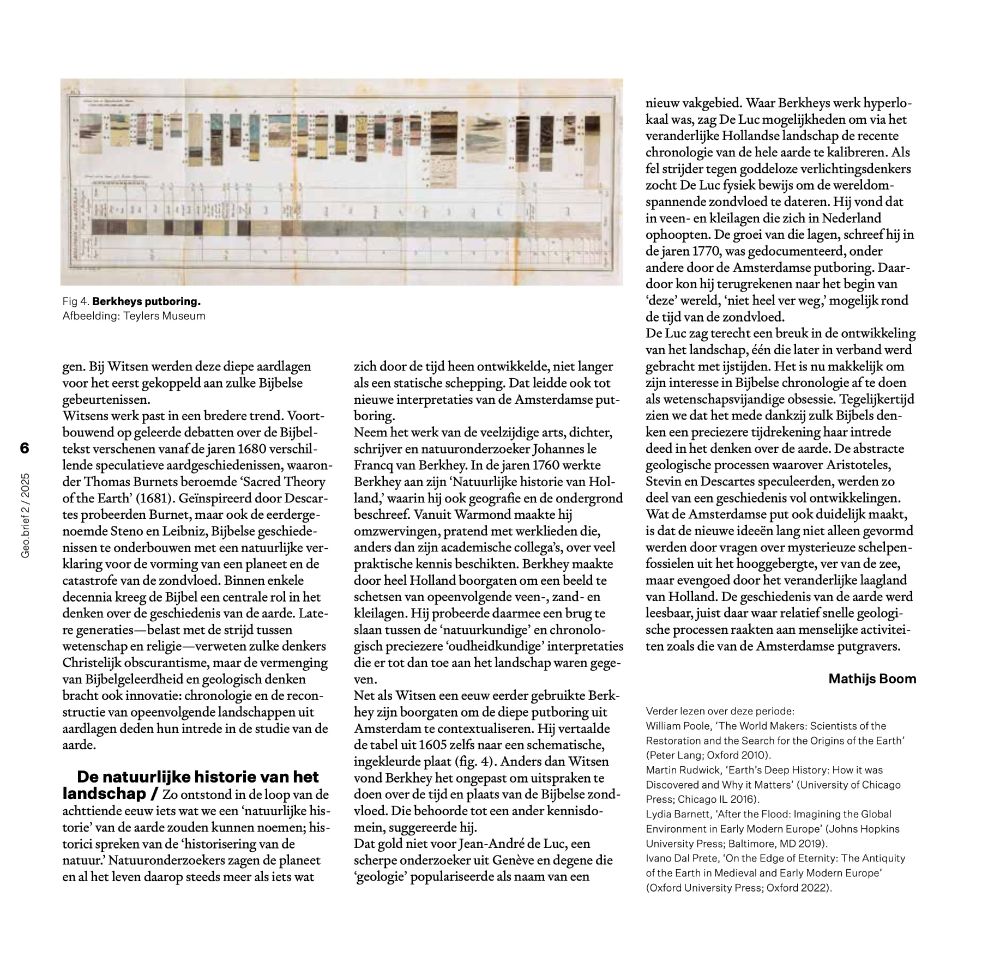
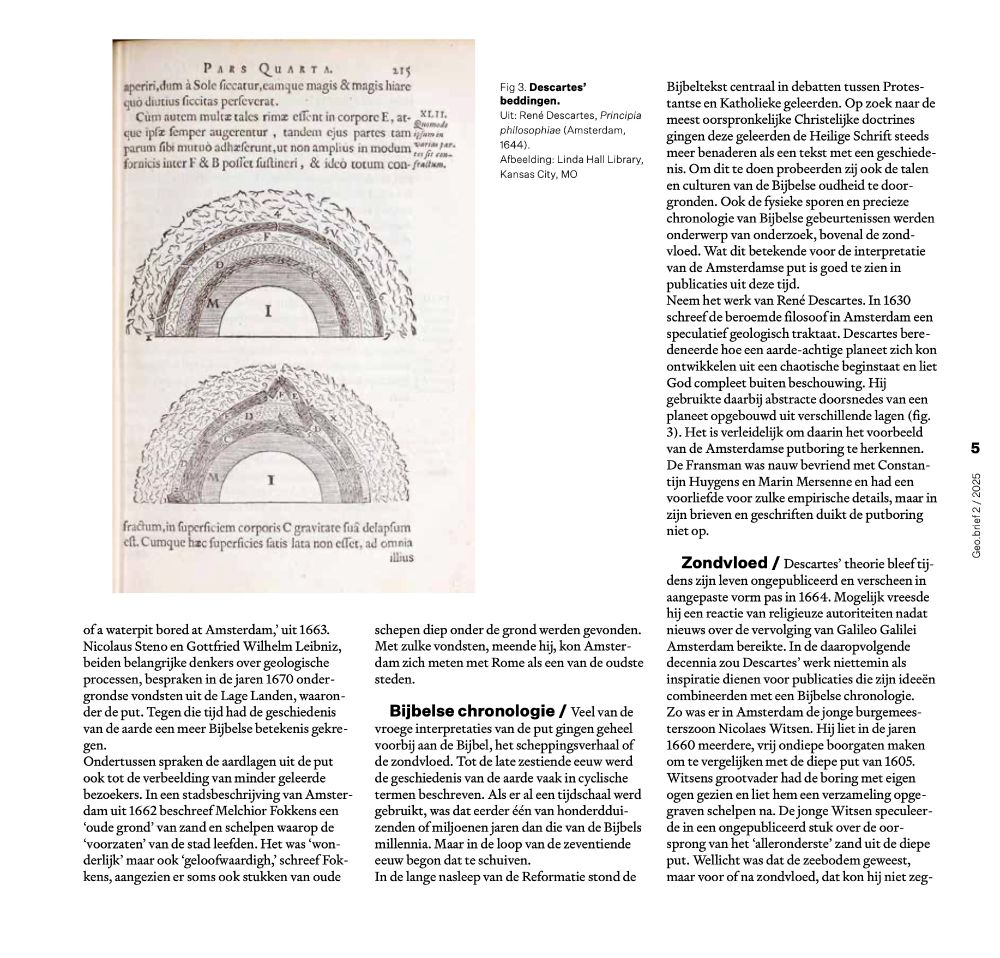
March 31, 2025 at 11:55 AM
Ik schreef een stukje over één van de leukste bronnen uit mijn proefschrift en waarom het Nederlandse laagland een plek in de geschiedenis van geologie verdient. Het verschijnt in Geo.brief, het blad van het Koninklijk Nederlands Geologisch en Mijnbouwkundige Genootschap, maar is gratis te lezen.
The 1634 copy in Stephen Jay Gould's collection (at Stanford) even has these fine marginalia, dated to 10 Nov 1742, emphasizing that fossil fish in chalk hills are "proof of the universall Deluge". Who were the resident diluvialists in Cambridge in 1742? It's not William Whiston's handwriting 3/

March 24, 2025 at 12:18 PM
The 1634 copy in Stephen Jay Gould's collection (at Stanford) even has these fine marginalia, dated to 10 Nov 1742, emphasizing that fossil fish in chalk hills are "proof of the universall Deluge". Who were the resident diluvialists in Cambridge in 1742? It's not William Whiston's handwriting 3/
Surprised by the detail of Richard Verstegan's 1605 discussion of fossils (although he doesn't use that word) and earth layers in the Low Countries in his "A Restitution of Decayed Intelligence: In Antiquities". 1/
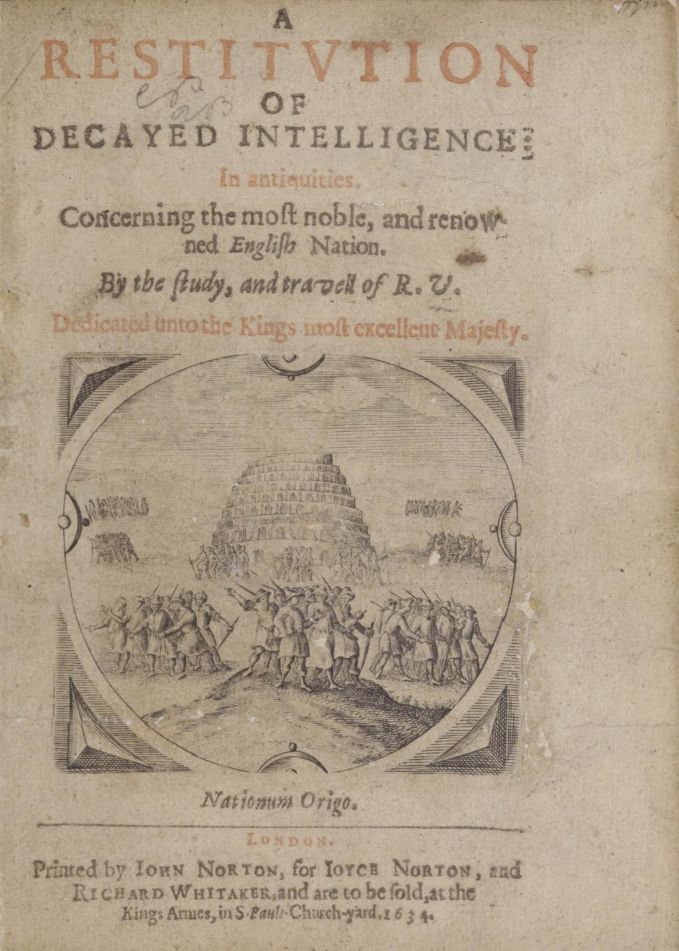

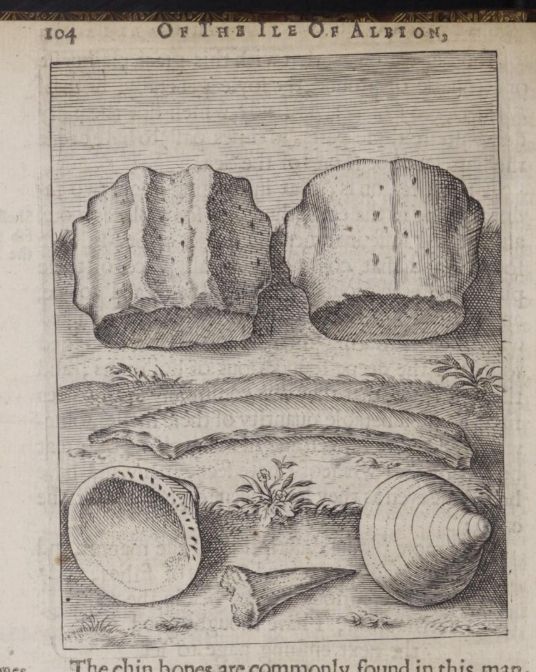
March 24, 2025 at 12:18 PM
Surprised by the detail of Richard Verstegan's 1605 discussion of fossils (although he doesn't use that word) and earth layers in the Low Countries in his "A Restitution of Decayed Intelligence: In Antiquities". 1/
Bog wood—trees preserved, sometimes for millennia, in acidic peat—is fascinating in its own right. It's found in peatlands around the world. It's, apparently, also a luxury product.

March 19, 2025 at 7:33 PM
Bog wood—trees preserved, sometimes for millennia, in acidic peat—is fascinating in its own right. It's found in peatlands around the world. It's, apparently, also a luxury product.

